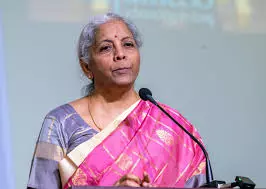In recent years, the city boundary of the Hyderabad Metropolitan Region, with an estimated population of 10 million, has been expanding rapidly due to economic growth driven by the IT and service industries, as well as a population influx. Despite the robust investment in infrastructure, it sometimes fails to keep pace with population growth, and the problem is particularly severe in the water sector. The water supply does not keep pace with the demand for water, and the region’s scarce water resources compound the problem. Accordingly, there is a significant need for the reuse of wastewater effluent from both publicly and privately owned centralized and decentralized wastewater treatment plants. In one case, the effluent of the wastewater treatment plant built by using Japan’s ODA loan assistance is being reused setting an example to the cities like Hyderabad.
With regard to wastewater management, the Hyderabad Metropolitan Water Supply and Sewerage Board has prepared a master plan for the development of the city’s sewerage system and is implementing various projects under this plan. Currently (2024), the coverage of the sewerage system is 100% in the Core Area, approximately 30% in the Periphery Area, and 0% in the ORR Village Area (area between the boundary of the Periphery Area and the Outer Ring Road (ORR)). Consequently, many new commercial buildings, located in the Periphery Area or the ORR Village Area, have installed their own private, decentralized wastewater treatment plants and are reusing effluents for nonpotable purposes, such as toilet flushing, gardening, and cooling. The state government is also promoting the proper management and reuse of wastewater by mandating that commercial buildings of a certain size install decentralized wastewater treatment plants. This situation differs slightly from wastewater reuse in Japan, where this is primarily conducted through the public sewerage system, and the use of decentralized wastewater treatment plants is rare, except for wastewater reuse at Johkasou at Kansai International Airport.
We describe the current state of sewerage system development and plans, as well as the current status of wastewater reuse, both through the public sewerage system and private decentralized wastewater treatment plants in Hyderabad. We also compare the related regulations (effluent standards, standards on wastewater reuse, etc.) in Japan and India and, in conclusion, indicate the issues for which knowledge exchange between Japan and India would be helpful to find the solution to the problems that Hyderabad and other Indian cities are facing. We hope that this working paper will contribute to the sustainable development of Hyderabad City, Telangana State, and also similar cities in India.
Working Paper 1506





